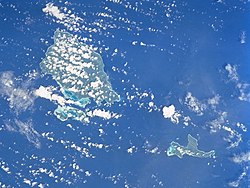This article needs additional citations for verification .(December 2009) |

The St Matthias Islands (also known as the Mussau islands) are a small archipelago group of islands in the Bismarck Archipelago, in northern Papua New Guinea. They are within New Ireland Province. [1] The archipelago is home to the St. Matthias languages.